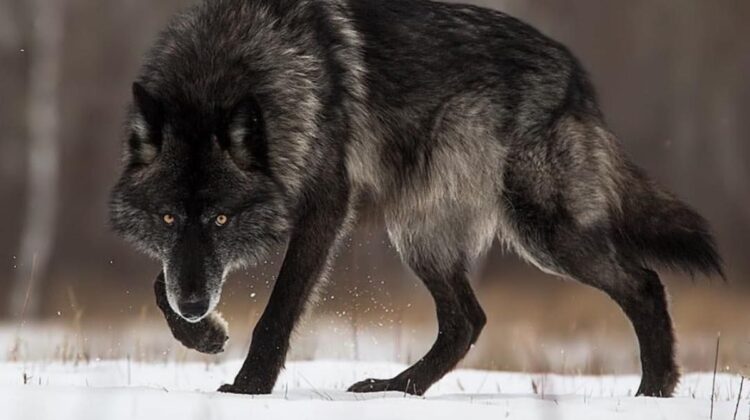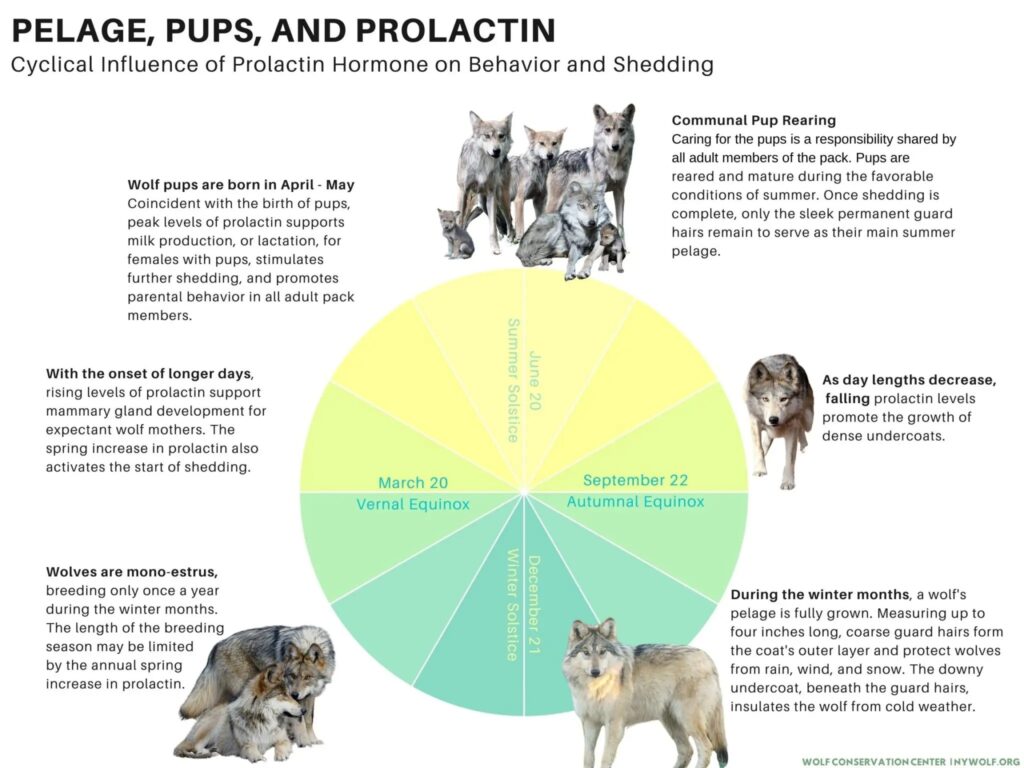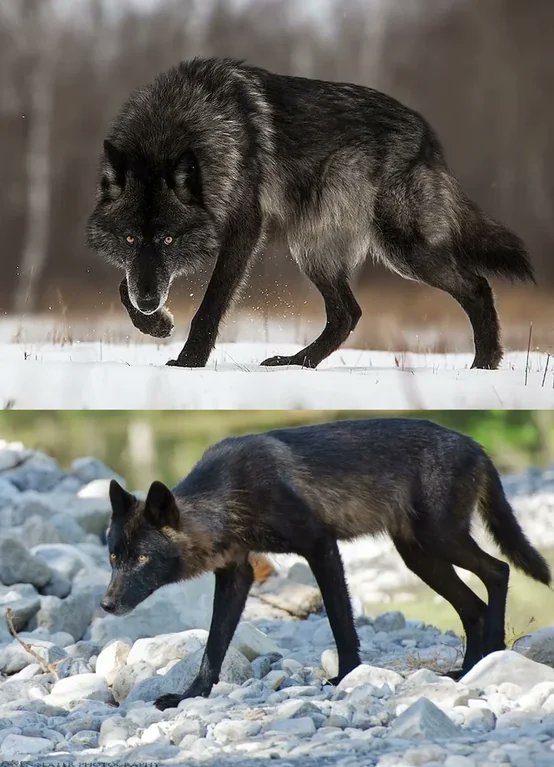
As the seasons change and the days get shorter, we humans begin to prepare for colder temperatures by bundling up in jackets and scarves. However, for wolves, adapting to the changing seasons is a bit different. They have their own built-in adaptation: a thick undercoat of fur.
A wolf’s coat consists of two layers: the long, protective guard hairs that form the visible outer layer of fur, and the downy undercoat that keeps them warm in cooler temperatures. This undercoat is shed during the spring and thickens as autumn approaches, allowing the wolf to regulate their body temperature as the seasons change.
The shedding and thickening of the undercoat is driven by hormone levels that rise in the spring with longer days and decrease as day lengths shorten in the fall. This photoperiodic rhythm in the wolf’s body chemistry allows them to adapt to the changing seasons without the need for warm outerwear.

It’s fascinating to think about the intricate ways in which animals adapt to their environments. Wolves have evolved to survive in cold climates by growing their own insulation. This adaptation not only keeps them warm but also helps them conserve energy, as they don’t need to expend energy searching for or creating shelter.
As we enter the colder months, we can appreciate the resilience of animals like the wolf, who have adapted to survive in harsh conditions. It’s a reminder that nature is full of surprises and that we can learn a lot from the animals that share our world.

In conclusion, the shedding and thickening of a wolf’s undercoat is a fascinating adaptation that allows them to survive in cold climates without the need for warm outerwear. Driven by hormone levels and the photoperiodic rhythm of their body chemistry, wolves can adapt to the changing seasons and thrive in even the harshest of environments.

Leave a Reply